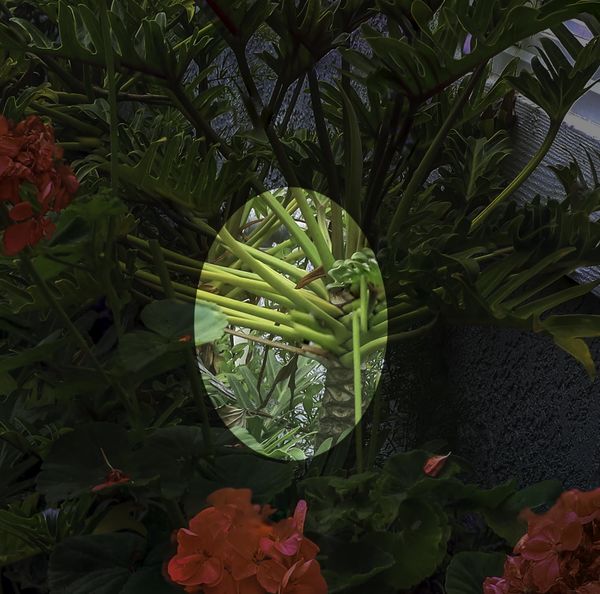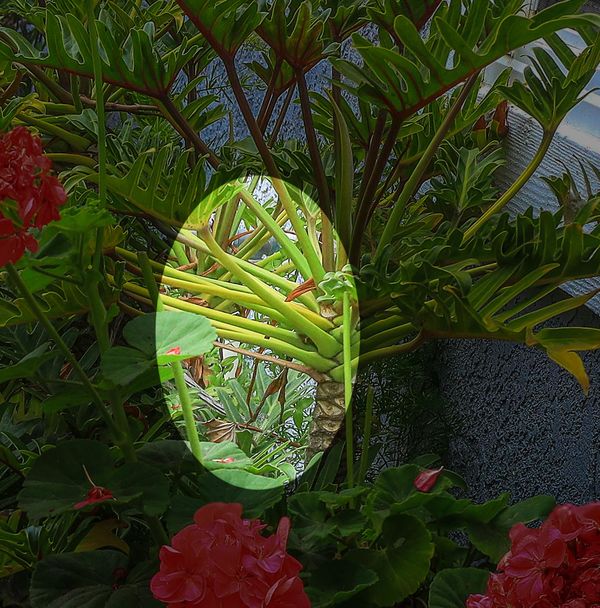Quick and Dirty 2-Image Focus Stacking
Jun 3, 2019 01:05:43 #
I don’t want to take credit for this technique as I got it from adventure photographer, Brendan Van Son. But I thought that it was worth passing on to other photographers. A tripod is a must for using this technique and involves taking two images of the scene.
1)After composing the photo, focus on the closest item that you want in focus and take the image.
2)Then re-focus on the farthest object you want in focus and take the image. It is important to use a relatively small aperture (f:8 or f:11 should work) and to not change the aperture between the two images.
3)Bring the two images into Photoshop as layers and align the layers.
4)Create a mask to the upper layer and apply a linear gradient to the mask.
The linear gradient will merge the foreground of one image with the background of the other producing a single image that is sharp from foreground to background. I realize my instructions are a bit sketchy but anyone with a working knowledge of Photoshop should be able to sort out the details for themselves. If there is sufficient interest, I could post detailed instructions.
1)After composing the photo, focus on the closest item that you want in focus and take the image.
2)Then re-focus on the farthest object you want in focus and take the image. It is important to use a relatively small aperture (f:8 or f:11 should work) and to not change the aperture between the two images.
3)Bring the two images into Photoshop as layers and align the layers.
4)Create a mask to the upper layer and apply a linear gradient to the mask.
The linear gradient will merge the foreground of one image with the background of the other producing a single image that is sharp from foreground to background. I realize my instructions are a bit sketchy but anyone with a working knowledge of Photoshop should be able to sort out the details for themselves. If there is sufficient interest, I could post detailed instructions.
Jun 3, 2019 01:16:50 #
rcarol wrote:
I don’t want to take credit for this technique as ... (show quote)
Easier method than Brendon's: In Lightroom, select both images, right click, choose Open as Layers in Photoshop. Once images open, select Edit/Auto-Blend/Stack and the process is automated.
Jun 3, 2019 01:36:57 #
rgrenaderphoto wrote:
Easier method than Brendon's: In Lightroom, select both images, right click, choose Open as Layers in Photoshop. Once images open, select Edit/Auto-Blend/Stack and the process is automated.
Good to know. Thanks. That's what this forum is all about: Photographers helping photographers. Your method will probably work with more than two images, right?
Jun 3, 2019 02:51:56 #
rcarol wrote:
The linear gradient will merge the foreground of one image with the background of the other producing a single image that is sharp from foreground to background.
How is it going to deal with a foreground subject (e.g. tree) that reaches to/or near to the top of the frame?
Jun 3, 2019 03:10:51 #
Grahame wrote:
How is it going to deal with a foreground subject (e.g. tree) that reaches to/or near to the top of the frame?
I'm afraid that the situation you pose cannot be solved by using focus stacking.
Jun 3, 2019 03:12:09 #
rcarol wrote:
Good to know. Thanks. That's what this forum is all about: Photographers helping photographers. Your method will probably work with more than two images, right?
It will work with any number of photos. for macro work, it can often be 10 to 20 shots if you want every inch in perfect focus. Yes it will put the f/22 to shame for clarity. I often use it for landscapes when I want front to back focus. check youtube for visual examples.
Jun 3, 2019 06:56:28 #
rgrenaderphoto wrote:
Easier method than Brendon's: In Lightroom, select both images, right click, choose Open as Layers in Photoshop. Once images open, select Edit/Auto-Blend/Stack and the process is automated.
Thanks

Jun 3, 2019 14:51:07 #
rgrenaderphoto wrote:
Easier method than Brendon's: In Lightroom, select both images, right click, choose Open as Layers in Photoshop. Once images open, select Edit/Auto-Blend/Stack and the process is automated.
I would like to suggest that before blending the images using the stack mode, that you take the extra step to align the layers first. I've included two images. In the first image, the layers have not been aligned and the stems of the bush are misaligned. In the second image, I aligned the layers prior to blending and the stems are in alignment.
Jun 4, 2019 08:04:46 #
I thought the focus stacking tools in camera or PS blended based on sharpness/focus not position within the composition. I get how the mask with grad filter would not do this but the other PS method should.
Jun 4, 2019 09:12:07 #
My old canon elan IIe had a function for this. Focus close press the shutter. focus far press the shutter. Camera then sets itself. Take the picture
Jun 4, 2019 09:17:52 #

Jun 4, 2019 09:18:31 #
WOW....thanks everyone. That was quick & easy all at once. Nice Work
Jun 4, 2019 11:10:38 #
Fotoartist wrote:
You mean like this?
Did you use the gradient mask to focus stack two images to get the final results?
Jun 4, 2019 11:11:38 #
Blair Shaw Jr wrote:
WOW....thanks everyone. That was quick & easy all at once. Nice Work
What was quick and easy?
Jun 4, 2019 11:58:22 #
rcarol wrote:
Did you use the gradient mask to focus stack two images to get the final results?
First I used Photomerge in Photoshop. Then I had to finesse the transition a bit. Most people think 5 minutes is too long to work in post on a shot. I do not.
If you want to reply, then register here. Registration is free and your account is created instantly, so you can post right away.






